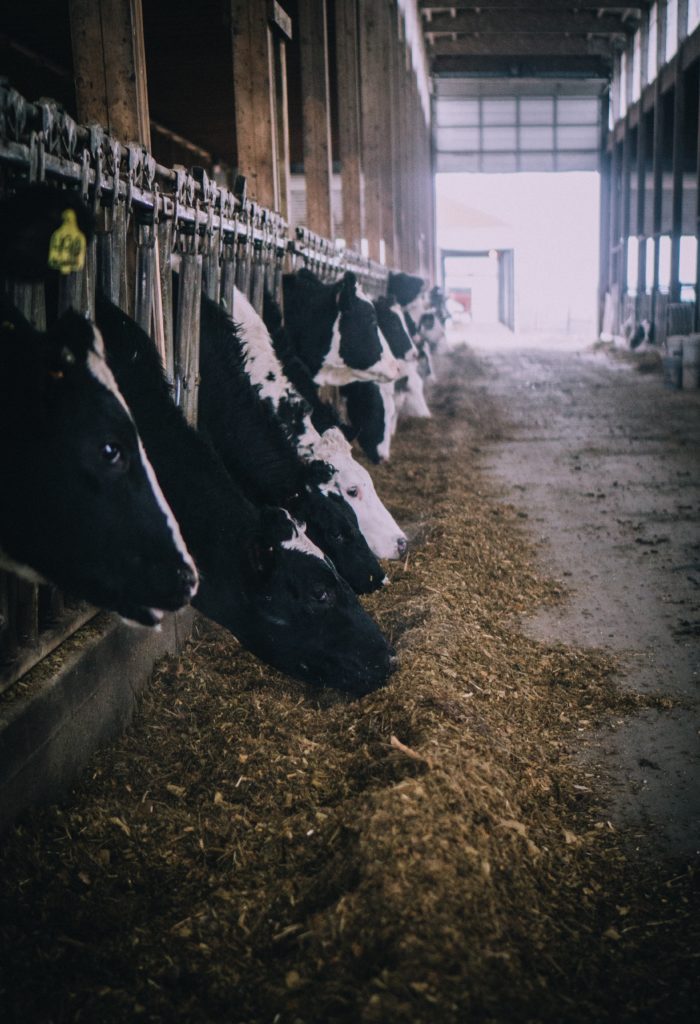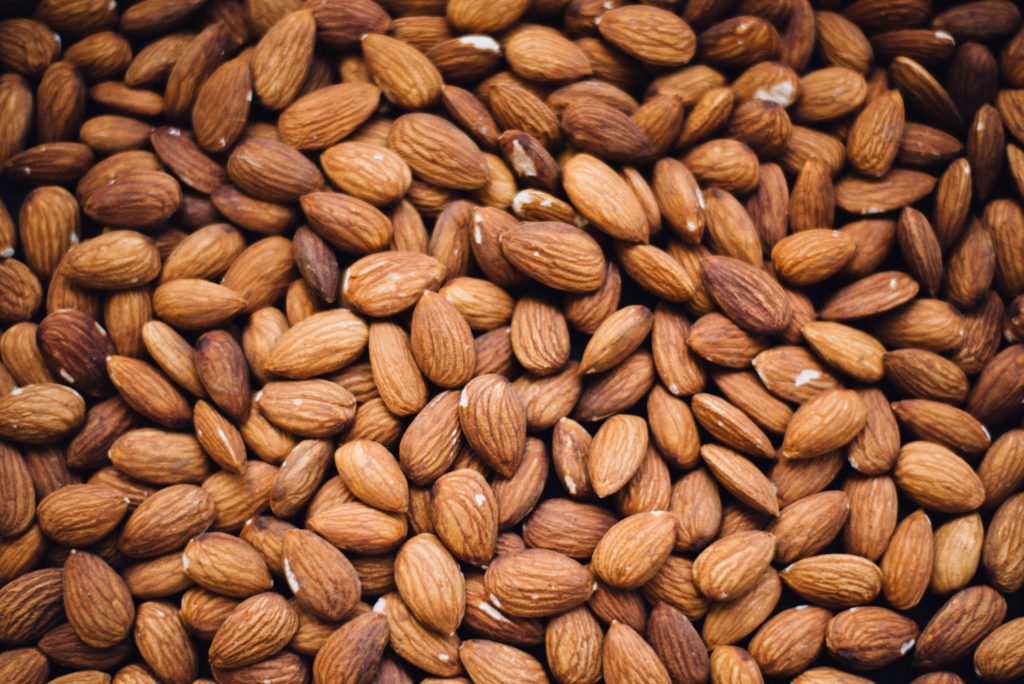Let’s start with this fact: No matter how you slice it, dairy milk will always have more of an environmental impact than non-dairy plant “milk.” And I put “milk” in quotations here because dairy farmers are having a cow—literally—about what can legally be considered milk. *Major eye roll*. Another fact: Production of vegetables requires far fewer resources than livestock. With that said, we still need to be responsible consumers, because unfortunately, “plant-based” doesn’t always mean healthy and sustainable. Sigh.
With that idea in mind, I took to the internet to find the truth about the growing and processing journey of our treasured plant milks. I’m a soy-milk drinker. In fact, as I write this I’m drinking a soy latte, nestled in a little cafe in Toronto. And despite what I’ve learned about soy’s harmful effects, particularly on women, I’ve also read a ton of articles on why soy milk is good for me.
But what about good for the planet? It turns out I had no knowledge of how soy milk is produced, and it got me wondering: Am I actually contributing to the destruction of our planet by making a choice I only thought was eco-friendly?
The world of research is tricky, it seems for every article claiming a benefit, there is one raising a concern. So in a time such as this with tons of conflicting theories I wanted to get to the truth about dairy milk production and it’s harmful effects on our planet, but also to gain truth about any harms that plant based milks may be causing our world. After all, it’s our responsibility as humans to take care of this world, no matter where our own personal opinions and feelings may lie.

Cow’s Milk
The Journal of Animal Science states that “modern milk production is not conducive to environmental stewardship.” Producing dairy drains natural resources like freshwater and soil. And not only that, one dairy cow produces 17 gallons of waste per day. When mismanaged that is an extremely toxic load on our environment, acidifying our soil, seeping into our water sources, polluting our air, and speeding up climate change. Growing food for them (often GMO soy) contributes to rainforest and wildlife destruction. Not to mention the completely barbaric nature of the dairy industry, which I won’t get into here.
In terms of water usage, it takes 144 gallons of water to produce 1 gallon of milk, according to the WWF. But it’s important to keep in mind that 93% of that water goes into growing crops that feed the cows.
Health related dangers of consuming dairy include diabetes, arthritis, asthma, colic, acne, heart disease, lymphoma, ovarian cancer and multiple sclerosis.
Soy “Milk”
As with most things, its all about where you source it. Sadly a lot of the soy we consume is genetically modified. And while it is true that a ton of soy is grown in Brazil where rainforest depletion is catastrophically increasing, if you live in the U.S., most likely the soy you consume is produced locally in the Midwest, with Iowa being the highest producing state. The bad news: 90% of soy produced in the U.S. is GMO. If you do consume soy, make sure to do your research on the company’s source and farming practices.
It takes about 78 gallons of water to produce 1 gallon of soy milk, which is half of the water usage for cow’s milk. It’s also important to note that most soy that is produced is fed to animals to produce meat, eggs, and dairy.
The negatives about soy is that as a crop it is sprayed with chemicals, so just make sure to always choose organic if you’re going to consume it. In terms of health concerns, a lot of them don’t have the research to back them up and are mostly claims. Check out this article for more information on the concerns and benefits of soy.

Almond “Milk”
Almond “milk” companies are under fire right now, and rightly so, for the fact that almond “milk” uses seventeen times more water to produce than cow’s milk does. The bulk of almond milk growth and production happens in California, where fresh water is a precious commodity.
However, almond milk production has lower levels of greenhouse gas emissions so even though its water consumption is higher, it arguably has less of an ecological impact.
Oat “Milk”
Oat “milk” is definitely having its moment. Baristas love it for its frothy, creamy consistency, but aside from that, the company Oatly was created with sustainability in mind, with a promise to make a “minimal environmental impact.” Their production waste turns into fertilizer and becomes animal feed. I can’t help but wonder if it’s going to feed livestock or pets. But I suppose that as long as we live in a world where there is livestock, they have to eat, and better to come from a source that would have would up as waste than to set fire to another rainforest to plant new crops.
The downside of oat milk production is that it leads to soil acidification, and chemicals use in growing are leeched into the soil. Organic is the way to go for least impact.

Coconut “Milk”
I’ve got to say this one impresses me. Coconuts don’t need a ton of water to grow and the trees themselves add carbon to the soil which keeps it fertile.
The only downside of coconut milk is that coconut trees only grow in tropical locations. So depending on where you live and the freshness of the product (i.e. in Bermuda I have a choice to make my own coconut milk, or opt to buy it in the store from a company who packages it in U.S.A but gets their coconuts from Thailand) the carbon footprint will be smaller or larger.

Hemp “Milk”
Not the best tasting plant-based milk I’ve had, but in terms of sustainability, hemp milk is where its at. The plant itself needs little water, suppresses weeds (so no Roundup!) and resists diseases and pests (bye, bye pesticides!)
The nutrition benefits aren’t any more impressive than other plant-based milks that are fortified, and unfortunately this one is a win for the planet but a loss for coffee and cereal.
Macadamia “Milk”
Companies like Milkadamia tout a sustainable approach, much like Oatly. However, their macadamia nuts are grown in Australia, so for us on the other side of the world means a large carbon footprint. But beyond that, Milkadamia grows their nuts in a place with rich soil and lots of rainfall that requires no irrigation. On top of that they use low-impact farming and regenerative farming principles. And this milk tastes gooooood.
So here are the real facts: Plant-based dairy alternatives reduces land use by 76%, reduces greenhouse gas emissions by 49% and reduces damage to water supply by 50%. Cow’s milk has 3x the environmental impact in comparison to alternatives.
What I think is fantastic about modern plant milk companies, is that they are creating a company with sustainability in mind. And while dairy farmers have had to make progress too, most are just trying to keep their businesses alive as many have shut down due to the the rapid growth of the plant based dairy alternative industry. Right now, the dairy industry is scared, and they will do what’s necessary to keep their business running, including buying out small, plant-based companies. Recently Danone has acquired Alpro in a deal worth 12.5 billion dollars. Definitely cause for concern, but remember, you, as an educated consumer control the market.
So what are the rules? Probably ones you already know. Buy local. Choose Organic. Do your research. And say no to dairy.
__
Photo: Unsplash; Kipp, NeOnBRAND, Chuttersnap, Kredenets, Pereyra, Tsang, Jeshoots.com




